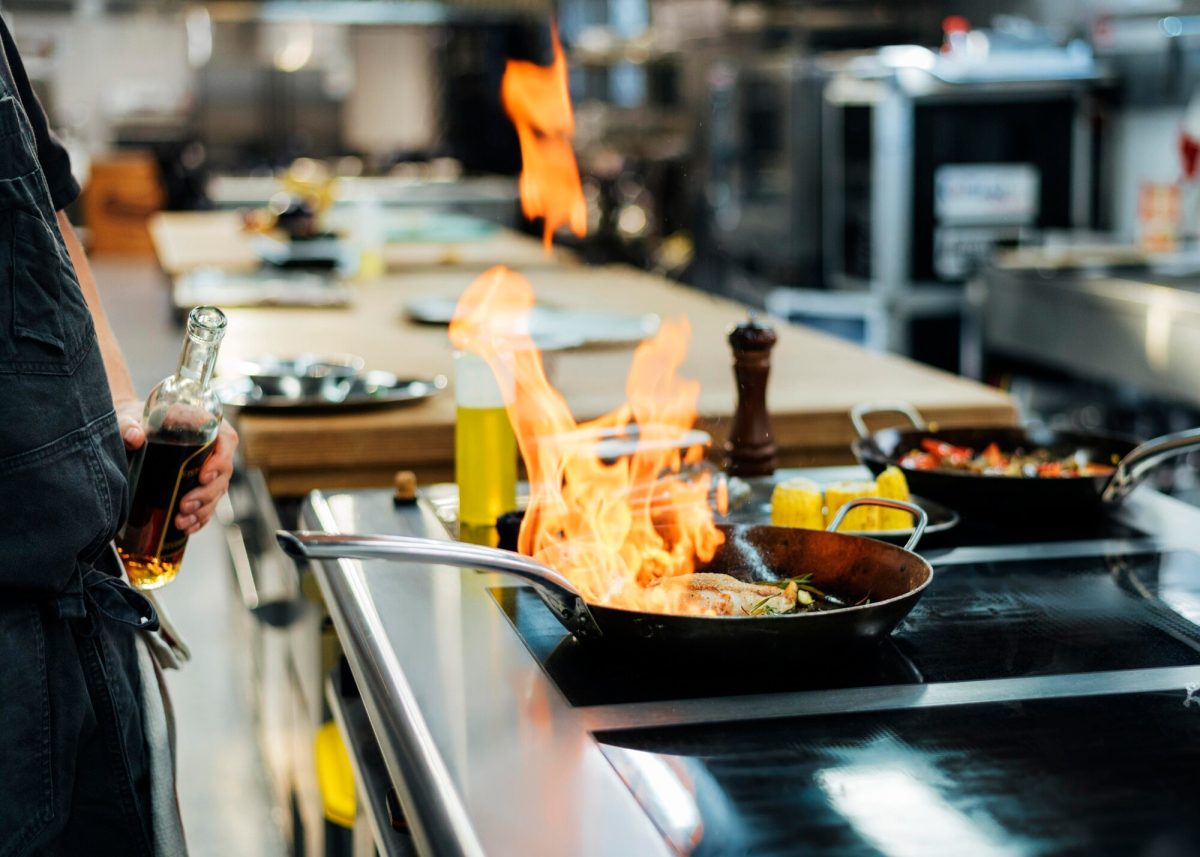Smart kitchen design is all about speed, consistency, and efficiency. Whether you manage a fast-casual chain or a cloud kitchen that only provides food for delivery and takeout, tracking the right performance metrics—or KPIs—is the secret to staying ahead in a highly competitive market.
Here are ten must-watch KPIs that will help you optimize every stage, from prep through service, and keep your kitchen running at speed without compromising on quality or safety.
1. Order-to-Serve Time
Order-to-serve time measures how long it takes from when an order is placed to when it’s delivered to the customer. This metric is crucial in a high-velocity kitchen and can be tracked via your POS system or kitchen display screen. Be sure not to look at this figure only once. Instead, calculate it at different times of the day, week, and year, then average these figures to get a clear snapshot of how your restaurant is running.
Additionally, keep in mind that standards may vary depending on the type of kitchen you are managing. For example, you should try to keep this number under 10 minutes for typical fast-casual setups, while this time can increase or decrease based on your kitchen type and unique selling point.
2. Cook Cycle Variance
Cook cycle variance shows how much cooking times differ from the standard for each item. Too much variance might indicate that there are training issues and equipment inconsistencies. Or it could mean that the menu is too complex for your staff to prepare items quickly and constantly. You may use smart kitchen sensors or oven logs to calculate cycle averages and highlight outliers.
3. Throughput Per Hour
Throughput is about how many orders your kitchen completes every hour, especially during peak periods. Kitchen sensors, as well as an analysis from your POS and dashboards at the end of a shift, can help you gain these insights.
If you need to boost this KPI, consider focusing on staff training and investing in quality equipment that is able to accommodate fast turnaround. For instance, in kitchens using high-speed equipment, like a TurboChef oven, throughput can almost double compared to standard setups. Reviewing equipment specs and data from your kitchen management system helps set realistic throughput benchmarks and spot slowdowns early.
4. First-Pass Yield
First-pass yield tracks the percentage of dishes that pass all quality checks on the first try—no recooks, no send-backs. To calculate your first-pass yield, you can use a simple formula: (Orders successfully completed without error / Total orders) x 100. High numbers mean your prep and execution are on point, while dips may signal recipe, training, or equipment issues.
5. Energy Per Order
Efficient kitchens monitor the amount of energy used per meal. With smart meters and modern appliances, you can track kilowatt-hours or gas usage per shift, then divide by orders served. Use this number to target waste and justify equipment upgrades.
6. Device Uptime
Device uptime measures how often key appliances are available and working. To get this figure, take time to track planned and unplanned outages for ovens, fryers, or refrigeration units. High uptime means more reliability and better flow—even a single hour lost to repairs can have a domino effect on throughput.

Remember that high-quality equipment also plays a role in maintaining food safety! Malfunctioning ovens or dishwashers that are not working properly can fail to heat up food to the right temperature or clean pans and plates. This can lead to the growth of bacteria and cross-contamination, which can put your customers—and your business’s reputation!—at risk.
7. Mean Time to Repair (MTTR)
Mean time to repair (MTTR) tells you how long it takes to get any device fixed and running after it fails. To get this important metric, collect data from maintenance logs: add the repair times for all breakdowns over a set period, then divide by the number of repairs. Lower MTTR means less costly downtime and smoother operations.
8. Parts Lead Time
Keep tabs on how long it takes to order and receive replacement parts for your core kitchen equipment. If waiting on parts slows you down, it might be time to stock extra spares or work with suppliers who can ship overnight. Recording purchase orders and delivery dates in maintenance software helps pinpoint bottlenecks.
9. Recipe File Compliance
Smart kitchens often rely on digital recipes loaded into ovens or cooking stations. Recipe file compliance measures how closely staff follow these programmed steps. Audit compliance with random checks or via your kitchen’s automation dashboard. High compliance cuts waste and raises consistency, while non-compliance can cause quality drops or delays.
10. HACCP Log Completion
Food safety logs are non-negotiable. Compliance with Hazard Analysis Critical Control Point (HACCP) log requirements shows that cooks are checking temperatures, cleaning schedules, and other critical points. Digital logging tools make it easy to see if logs are missed, incomplete, or flagged for follow-up.
How to Track and Improve These KPIs
Above, we have seen the importance of tracking essential KPIs in a kitchen. But how do you get these figures and, more importantly, how can you boost your kitchen’s efficiency? Start by connecting your POS, kitchen automation, and maintenance software so you can collect real-time data for each KPI. Many systems can produce easy-to-read dashboards and generate trends over time. Share weekly or monthly updates with your kitchen leaders, and highlight quick wins (like shaving off a minute of order-to-serve time) to boost morale and results. At the same time, be sure to develop an action plan if you notice areas where time or energy is wasted.
Tracking these KPIs not only keeps you ahead of problems, but also positions your kitchen to respond quickly when guest expectations, menu demands, or order channels change.






